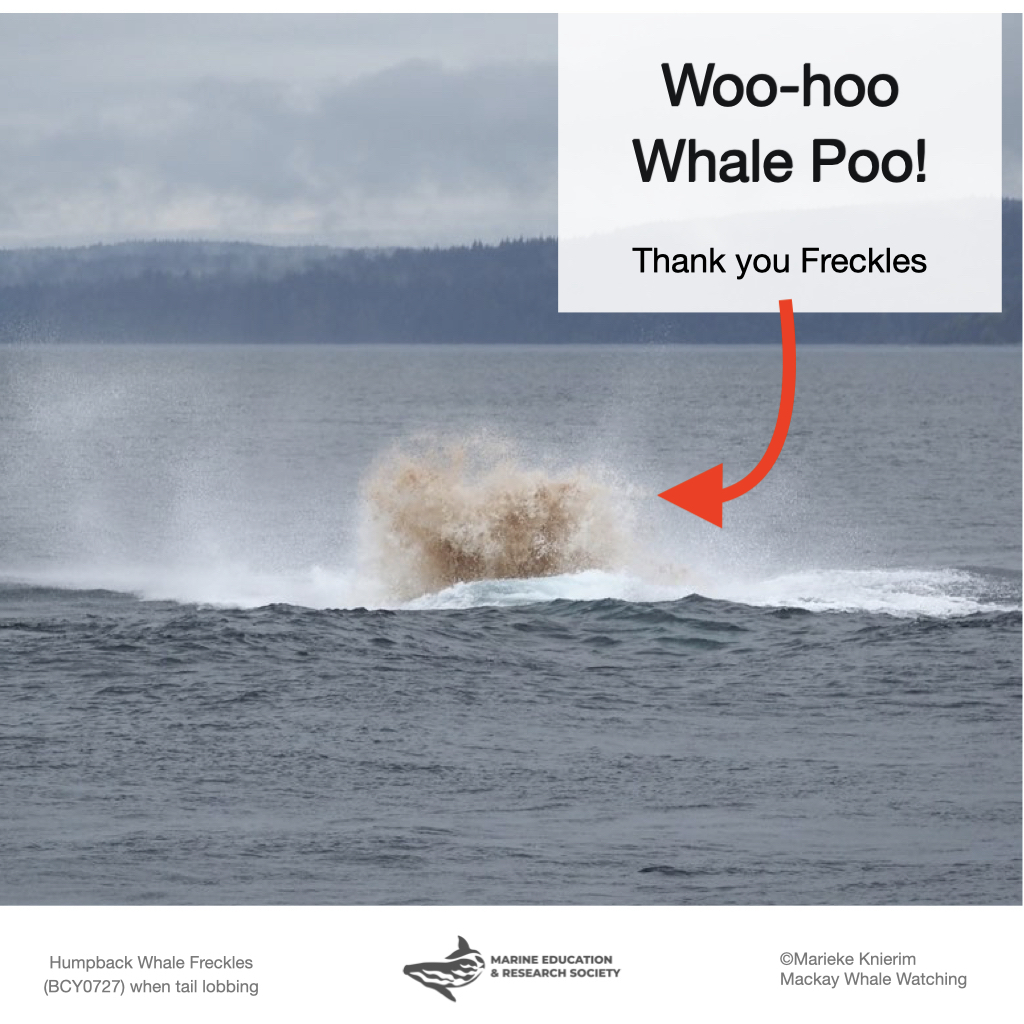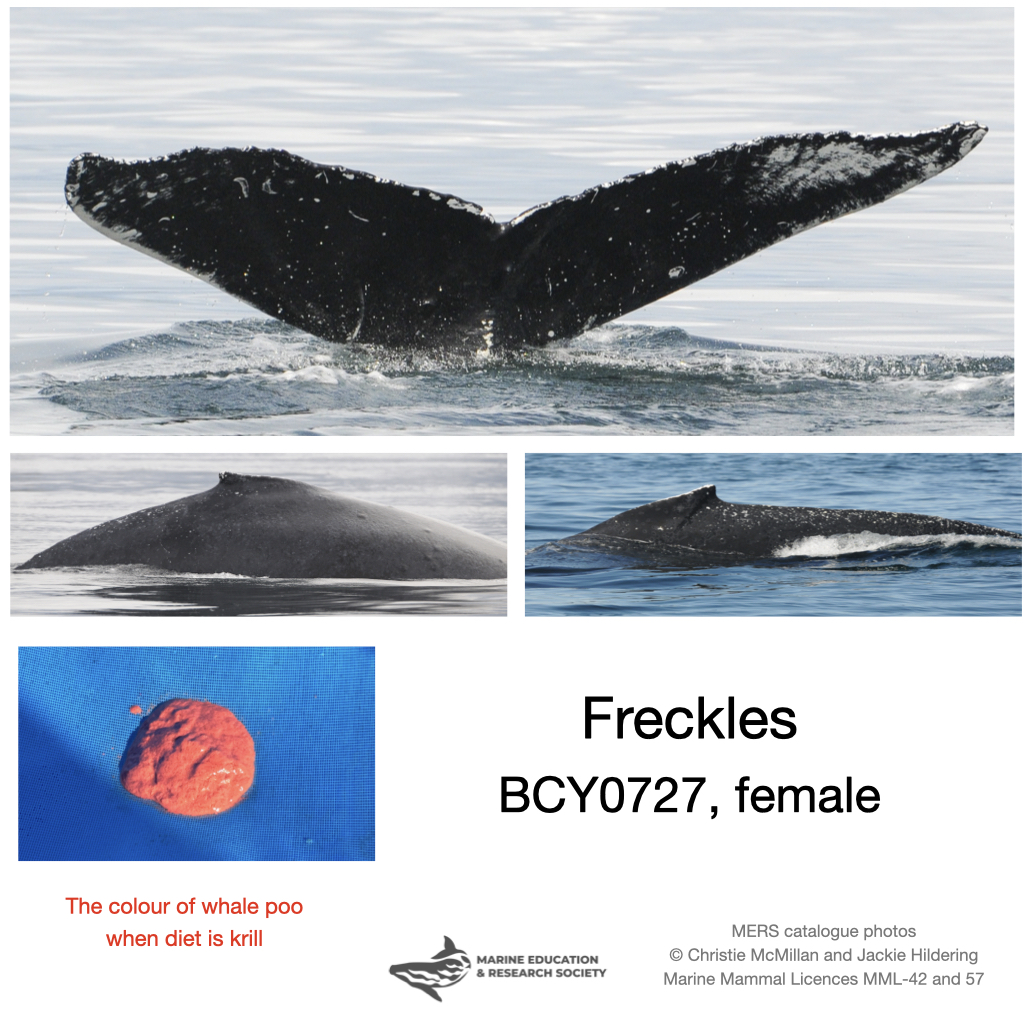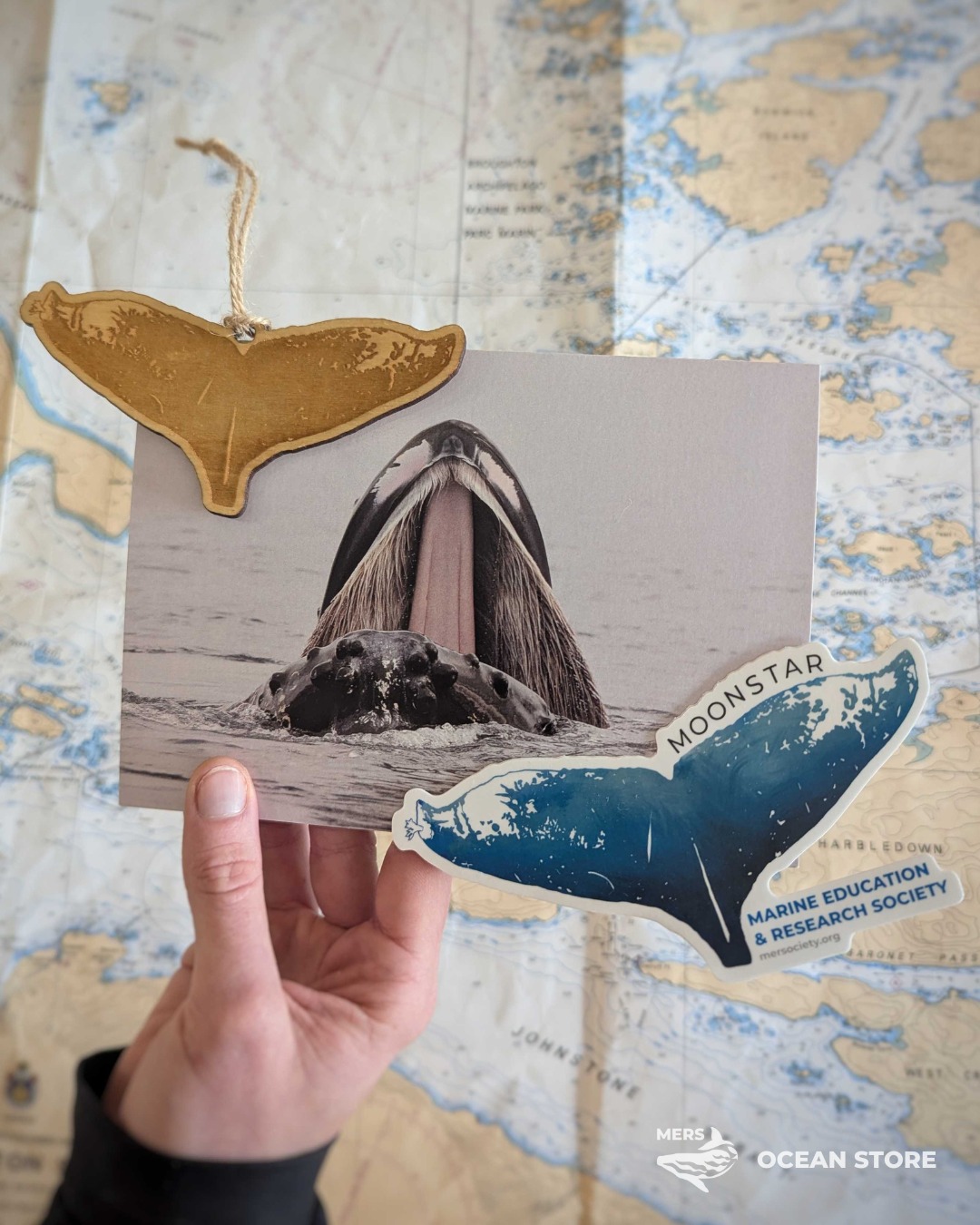Freckles the Humpback is back, with a splash!
And yes, that’s whale poo.

Freckles was tail-lobbing which makes it easier to see that she had been defecating. The colour suggests she’s been eating both krill and small schooling fish (most likely herring). When a Humpback’s diet is fish, the colour is grey and when the diet is krill, the colour is intense orange (see photo at the bottom of this blog).
This photo is a brilliant capture by MERS team member Marieke when doing her second job as naturalist for Mackay Whale Watching.
We share the image with you because:
1) To increase awareness of the importance of whale poo. Whales always defecate at the surface, fertilizing the phytoplankton / algae there. Through photosynthesis, this leads to more oxygen being produced and more carbon dioxide being absorbed. More phytoplankton also means more food, not only for the local marine ecosystem, but across ocean basins when the whales urinate in the nutrient-poor warm waters of their breeding grounds.
2) Because Freckles (BCY0727) is back! She’s such a recognizable Humpback Whale thanks to those little white marks on her sides that are the inspiration for her nickname.
Since 2009, she very predictably returned from the breeding grounds to feed around northeastern Vancouver Island.
But we did not see her from 2020 to 2022 (she had her first known calf in 2022). In those years, she was feeding in Alaska, known thanks to our colleagues at Glacier Bay National Park and Preserve and sightings contributions to Happywhale. She was there earlier this year too.
We are so glad to see you back Freckles, for the many gifts you bring!
______________________
#WhalePump #WhatWhalesDoForYou #CarbonCapture



